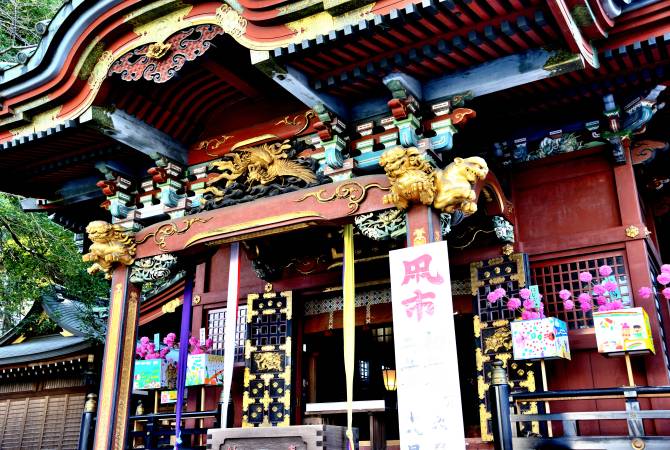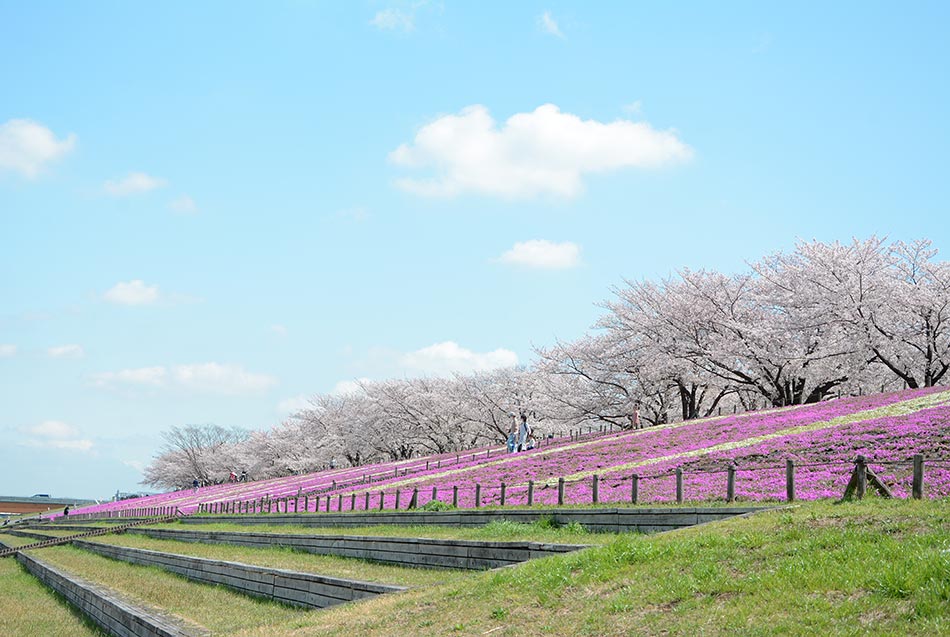
- Share this page
Share this page
- EN
Select Language
- FAVORITES
- Search
Detailed search: You can do a detailed search by keyword, genre, time, area and tag.
Main content starts here.
- Visit Tokyo |
- SPOT |
- Northern Tokyo |
- Akabane – unwind with the locals
Updated: December 19, 2025
Akabane – unwind with the locals
A fun and down-to-earth Tokyo neighborhood
A town where you can enjoy gourmet food and sake, Akabane is a residential area with a retro atmosphere on the border of Tokyo and Saitama prefectures. Popular with Tokyo's workers, the area comes alive at night when the narrow alleys around the station glow with red paper lanterns, and revelers spill out of inexpensive bars and restaurants. In April, the Akabane Ichibangai shopping street hosts the Akabane Baka Matsuri, or Fools Festival, which has a history of over 60 years, and attracts large crowds to watch the parade and dancers dressed in flamboyant costumes.
Asukayama Park, with its cherry blossoms in spring and hydrangeas in summer, is also famous for the “Oji Fox Parade” on New Year's Eve.
The lush green Kyu-Furukawa Gardens is also nearby, with a mix of classical Japanese and European gardens surrounding a grand European mansion.
How to Get There
Access the area from Akabane Station on the JR Utsunomiya, Takasaki, Shonan Shinjuku, Saikyo, and Keihin-Tohoku Lines.
From Haneda Airport: Around 70 minutes on the limousine bus or 55 minutes by train.
From Narita Airport: One hour 40 minutes by train.
From Shinjuku: Take the JR Saikyo Line for Akabane Station. Travel time: 20 minutes.
From Tokyo: Take the JR Keihin-tohoku Line for Akabane Station. Travel time: 30 minutes. Or take the JR Takasaki Line to Akabane Station. Travel time: 17 minutes
Everything is OK in Akabane
From early afternoon, diners and drinkers crowd into the cozy, lantern-lit alleys of Akabane Ichibangai and OK Yokocho around Akabane's east exit, ready to forget the stresses of the day. The area evolved from a postwar black market and retains some of that raffish charm. It's a good place to meet the locals, who are relaxed after the day's work and ready to chat over a drink or two. You can find every kind of cuisine, from traditional eel restaurants to quick and tasty yakitori chicken skewers.


Paper, foxes on parade, and massive gardens
The nearby town of Oji is a stop on the Toden-Arakawa Line, one of only two tram lines left in Tokyo. The area is dominated by Asukayama Park high on the hill, which has been a popular spot for cherry blossom parties since the Edo period (1603-1868). Oji is also famous as the birthplace of Western paper in Japan, with the opening of the first western-style paper mill in 1875. You can visit the Paper Museum in Asukayama Park and try making your own paper at weekends.


If you're visiting Tokyo around New Year's Eve, consider going to Oji for the Oji Kitsune-no-Gyoretsu Fox Parade. Townspeople and visitors dress in fox costumes and makeup, and parade through the town to Oji Inari Shrine, reenacting a Japanese legend that foxes disguised themselves as humans to visit the shrine. You can get your face painted in traditional fox style and join in the fun.


A short stroll takes you to Kyu-Furukawa Gardens, which surround an imposing Western-style mansion built of grey stone in 1917 by architect Josiah Conder. The European-style rose garden draws visitors from May through early summer, and the traditional Japanese gardens with small waterfalls and ponds are beautiful in all seasons.


The Arakawa Akabane Sakura Tsutsumi Greenspace is a promenade of 108 cherry trees and moss phlox, ideal for a leisurely stroll in the cherry blossom season, or to watch the fireworks and feel the refreshing river breeze in the summer.
Located about 20 meters above sea level, Akabane Hachiman Shrine is one of the most popular sightseeing spots in Akabane. The shrine is visited by those seeking the aid of the god of victory, such as athletes or students preparing for exams. It is also a favorite photo spot for railway fans, with a number of shinkansen and train lines running nearby.
The Kita-ku Furusato Farmhouse Experience Center is a facility where you can learn about the history and culture of the past through tours of old folk houses and hands-on activities. The Former Matsuzawa Family Residence, a designated tangible cultural property of Kita Ward, has been preserved, relocated and restored in Akabane Nature Observatory Park.

